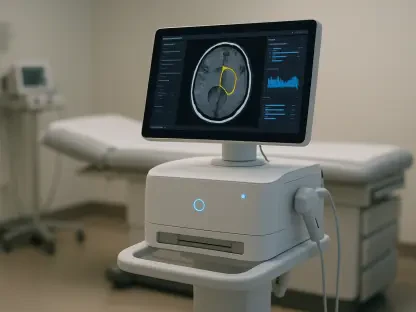Imagine a state with the resources to treat all its residents struggling with mental illness and substance use disorders, yet it still faces significant challenges in providing adequate support. This is the reality in California, where despite substantial financial investments, the behavioral health system grapples with data collection and integration inefficiencies. Now, the state is on a mission to revolutionize its behavioral health data system. But can this investment truly transform care and improve outcomes?
The transformation of California’s behavioral health data system is not just a technical upgrade—it is a critical initiative that could directly impact the lives of millions. Reliable data is essential for understanding who is receiving services, which interventions are effective, and where gaps persist. This information is akin to a Rosetta Stone for behavioral health, shedding light on service gaps, improving care quality, and optimizing resource allocation.
California’s public behavioral health system has long been burdened with fragmented data collection methods that are both cumbersome and inconsistent. Under the Behavioral Health Transformation umbrella, including initiatives like Medi-Cal CalAIM and the Behavioral Health Services Act, the state is making ambitious strides to integrate behavioral health data across various systems and programs. These efforts are essential for advancing data-driven care models and enhancing the overall effectiveness of the health system.
A recent report by the CHCF and the Behavioral Health Data Project highlights the current challenges and priorities in the state’s behavioral health data system. Interviews with state and county administrators, along with behavioral health providers, reveal common concerns about the utility and quality of data, as well as the processes involved in data collection. Manual data entry, high staffing costs, and delays in data availability are among the primary issues cited.
Furthermore, California’s 58 counties each have unique data requirements, which often result in inconsistent provider contracts and duplicative reporting to multiple agencies. This lack of standardization creates a significant administrative burden and hinders the efficiency of data sharing among different entities within the system. Improved data linkages are crucial, especially for initiatives that depend on cooperation between various care providers.
Addressing these challenges, the state has identified specific areas for improvement in behavioral health data categories, such as service use, cost, quality, outcomes, demographics, and equity. Historically, service use and cost metrics have dominated data reporting due to funding needs. However, there is a growing emphasis on measuring service quality and outcomes. This shift involves tracking process-oriented quality measures, successful treatment outcomes, and the overall satisfaction of clients.
Improving outcome measures is imperative, as these metrics reflect the actual impact of services on clients’ lives. This includes tracking functional improvements, symptom resolution, client self-assessments, and social success indicators. Initiatives like CHCF’s Cultivating Outcomes through Equity in Behavioral Telehealth and the Fountain House clubhouse model demonstrate innovative approaches to implementing recovery-oriented outcome measures.
Demographic data collection has also made strides, driven by California’s focus on equity in behavioral health care. Nonetheless, coordination among state departments remains insufficient, leading to fragmented demographic data requirements. Aligning these requirements with updated federal guidelines is crucial to streamline data collection and ensure comprehensive client information.
Despite these advancements, many challenges persist. Certain dashboards are outdated, and reporting delays impede effective decision-making. Larger counties often have the resources to develop their own sophisticated dashboards, while smaller counties may struggle to keep up. Recent initiatives, such as the semi-statewide Electronic Health Record system for behavioral health providers and the Behavioral Health Transformation Quality and Equity Advisory Committee, represent promising steps toward enhanced data integration.
In conclusion, California’s efforts to reform its behavioral health data system require continued focus and coordination. Leadership at the state level is vital to guide these initiatives and advocate for necessary federal support. Moreover, educating the public about the interplay of behavioral health services with other health and social services is essential. By simplifying processes and prioritizing cohesive data practices, California can build a behavioral health system that truly meets the needs of its diverse population. The journey is long, but the potential for profound positive change is within reach.









